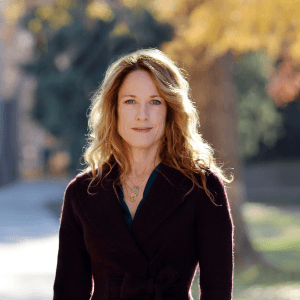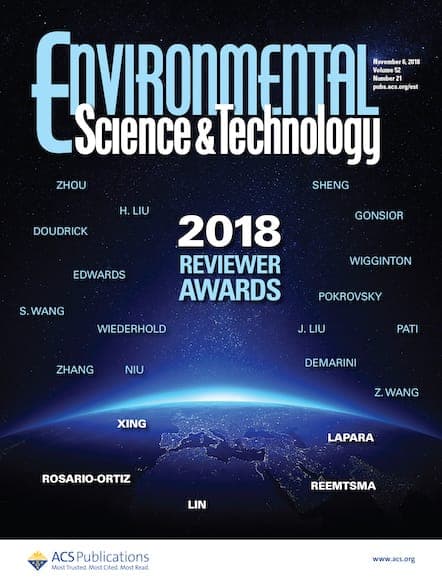Shelly L. Miller is a Professor of Mechanical Engineering at the University of Colorado Boulder and a faculty member of the interdisciplinary Environmental Engineering Program at CU. Miller’s current research projects include assessing and designing engineering controls such as filtration and ultraviolet germicidal irradiation for improving indoor environmental quality, reducing building fossil fuel consumption while […]

Shelly L. Miller is a Professor of Mechanical Engineering at the University of Colorado Boulder and a faculty member of the interdisciplinary Environmental Engineering Program at CU.

Miller’s current research projects include assessing and designing engineering controls such as filtration and ultraviolet germicidal irradiation for improving indoor environmental quality, reducing building fossil fuel consumption while improving health, characterization of indoor environmental quality in homes, understanding the microbiology of the built environment, studying how to reduce transmission of airborne infectious diseases using engineering controls, and identifying and mitigating sources of toxic chemicals indoors and noxious odors in urban communities. She has received funding for her research program from the U.S. EPA, HUD, CDC, NIOSH, NSF, NIH, ASHRAE, Alfred P. Sloan Foundation, and various private foundations and industry sponsors.
She serves as an Associate Editor of Environmental Science & Technology.
In this interview, I talk to Professor Shelly Miller about her area of research, how this has changed during the COVID-19 pandemic, and how she keeps up with the volume of research published recently.
Please can you tell us about your area of research?
I work in the general area of urban air pollution, which means I’m concerned about the air quality where most people live. I study sources of both outdoor and indoor air pollution, how to mitigate exposures, and the adverse health effects.
How has this changed in 2020, in light of the COVID-19 pandemic?
Early on in my research career, I started working on one major concern in indoor air quality, which is the transmission of airborne infectious diseases in buildings. There was a resurgence of tuberculosis in the late 1990s, and, as a result, we turned to engineering controls to help fight tuberculosis, and that included filtration and germicidal ultraviolet light.
I started working on airborne transmission over 20 years ago, and I have continued that work since then. We’ve worked some on mitigating a flu outbreak, but then when the pandemic hit, we started to wonder if there was actually an airborne component to it, and then realized all of my expertise in this area was really relevant, and I started to contribute and try to inform how to move forward and make indoor spaces safer.
How has your/ COVID-19 research developed as 2020 has progressed?
A project that I’d like to highlight is our work on outbreaks, singing, and playing wind instruments.
Some leaders in music education contacted me and said, “we’re really worried about musical classes in grade schools and colleges and musicians and bands. And we really need to talk to you about what to do about that.” I said “sure” and they said, “we need you to help us save music in schools.” My reaction was, “oh my goodness, that sounds like a really interesting challenge – we’re up for it.” So, they put together this amazing coalition of music organizations. Some people donated $500, some people donated $5,000, and this donated money funds our research.
The research is coming to a close right now – we studied aerosol emissions from wind instruments, singers, and performers. We’re working on the paper right now, but it’s been a really rewarding project collaborating with these musicians, organizations, and with the University of Maryland. It has been one of the most rewarding projects I’ve gotten to work on. It’s done a little differently because we’ve had to release information prior to publication because they need to know how to mitigate the risk right now.
So far, all the music classes are following what we recommend. There has been no transmission, and everyone’s been safe.
Learn more.
How do you keep up with the science that is being generated in relation to COVID-19? How do you ensure that it is consistent and the standards are kept up?
It is very difficult. I am part of a group of about 34 international scientists, and we communicate regularly via email. And they are experts in all areas: virologists and environmental health experts, engineers and slow fluid dynamics people, surface disinfection people, and people that work in a hospital. So, all of us are communicating about the newest science and sharing the best papers that we see coming out. We have also collaborated on at least three papers over the past nine months.
I also track the research on Twitter and try to keep up that way, and through the major outlets like the New York Times. I try to make sure that I’m reading papers that look to be really inspired and informative. For example, I just read a paper by a colleague in Canada, and it was such a good paper. I wrote to him, and I said, “Is this paper published yet?” And he said, “No, we can’t get anyone to take it!” My reaction was, “You’re kidding! It’s such a good paper. And I’m sorry, it doesn’t work for Environmental Science & Technology, but you should really keep working at it. How about you try this publication…”
There’s been a few times where I’ve reached out to the authors to let them know that their paper needs to be published!
There have been other times when I have read and reviewed poorly written papers. I personally don’t do anything with those papers. There are some that my colleagues write a rebuttal against, but I haven’t been involved in that.
Have you used social media more in 2020?
Oh, yes, it’s been incredible. I joined Twitter a while ago to try to help translate science into everyday life because the work that I do is very applicable to everyday life: how to keep your home and school and workplaces safer and how to reduce exposure to air pollution in urban areas.
Once the pandemic hit, I have gained many more followers. I might have had 1,000 followers, but now I have 13,000 followers. People are writing to me all the time, thanking me for my clear and helpful communication. And the latest science is directly being shared on Twitter.
Follow Professor Miller on Twitter: @ShellyMBoulder
How are you balancing your work and personal commitments in 2020? What advice would you give to others?
It’s definitely been a real struggle. I’ve spent much more time on service-related activities to try to help slow the transmission of the disease and educate people on how to keep themselves safer. My work has really switched to much more service to the international community compared to more professional societies or my department or my campus, although I did dedicate a lot of time to providing information on how to open our campus buildings to students, faculty, and staff to minimize risk. And I might add we have been very successful at this endeavor.
I’ve also had to change my research activities so that I’m responding much more quickly to COVID-19 needs, as opposed to writing proposals on topics that have nothing to do with COVID-19. I’ve had to put some of that work on hold, but my paper citations have significantly increased, and I’ve published four papers already because of COVID-19.
I’ve worked a lot more hours, and I’ve been lucky because I’m a tenured full professor, so I can be somewhat more flexible with my time, especially time spent on service. If I was an associate or assistant professor, I couldn’t just say to my department, “I’m not serving the department right now, I’m serving the world for COVID-19!” I’m lucky, and I feel a responsibility to step up and to do that.
Please can you highlight a key paper in your area that has been published in Environmental Science & Technology?
A recent key paper in my area is this Perspective on how indoor environments affect air pollution exposures. I think an increased understanding of indoor spaces such as schools, homes, and office buildings is especially needed at this time, given the clear evidence that the transmission of SARS-CoV-2 is much more common indoors compared to outside. This paper provides a succinct up-to-date assessment on this topic by some of the world’s leading experts in the field.
How Do Indoor Environments Affect Air Pollution Exposure?
Environ. Sci. Technol. 2021, 55, 1, 100–108
DOI: 10.1021/acs.est.0c05727
How have you found the experience of being Associate Editor for Environmental Science & Technology?
I have really loved being an Associate Editor. I had a taste of being an editor when I was a Guest Editor for a different journal. And then when I had this opportunity, I was really excited because I remember just thinking it was such a rewarding experience, supporting authors in their efforts to communicate the results of their research with peer review, revision, suggestions to make the paper stronger, and as well as suggesting that the paper may be better published in a different journal with a different readership.
I’ve been really enjoying the diversity of papers, and yet, they’re still in my area of expertise. The diversity of authors and research topics has been inspiring, and the incredible range of reviewers, and the excellent scope of our reviewers’ expertise.
We had a ton of papers early on in the pandemic that I was processing. And it seemed like it has slowed down, but I am getting more COVID-19 related papers now. Some of them are really quite interesting, and we’re trying to get through them pretty quickly here.
